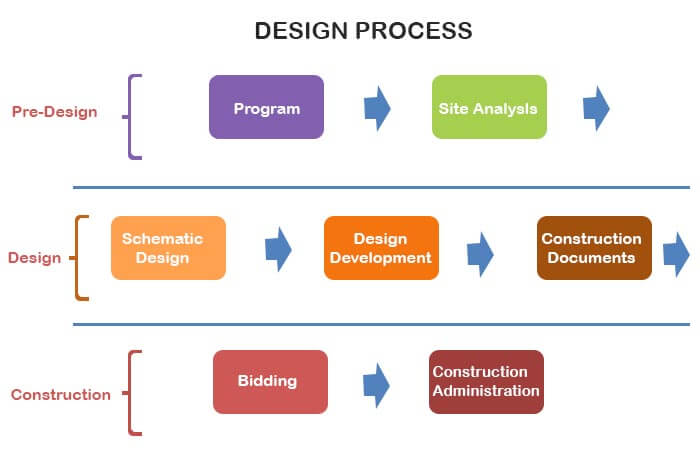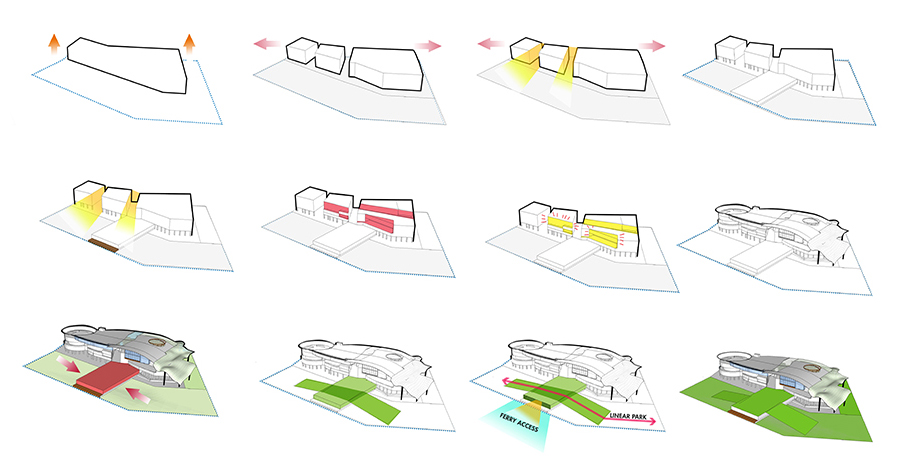
Schematic Design is the first phase of actually designing the project. THE 5 MAIN PHASES OF ARCHITECTURAL DESIGN create existing condition drawings as required.create design goals including scope of work.create space planning and adjacency bubble diagrams.create preliminary sustainability goals.request preliminary geotechnical studies as required.

review legal documents related to site and building regulation.review preliminary impact of environmental, zoning, and other regulations.review applicable zoning and ordinances.
Architect design process code#
In this "extra service" phase we research, analyze, and evaluate all of the client's requirements, building code and zoning regulations, as well as site data to develop recommendations on the feasibility of a project. It is of extreme importance that this information be shared with the architect, so we can work on your behalf to create a successful project in the end.Īrchitectural Programming & Analysis focuses on the first phase of a project, often referred to as Pre-design. Also at this level, the client must identify, to the best of their ability, the project scope of work as well as the perceived schedule and budget. At our firm we get involved in Pre-design and programming architectural services quite often. This phase can be a lengthy or short process depending on the type of project and its complexity.Ĭlients do not always hire an architect for this portion of the project. This will include preliminary research on the client's part and possibly the architect's. Pre-design and programming are general terms for what we do before we start designing a building. This is often considered the Pre-design and Programming stage/phase, often considered an Additional or Extra Service. While there are five distinct phases of architectural design, some research and planning must be done to enable those phases. Once we have come to an agreement, we will document any "existing conditions" through field studies and gather any relevant architectural data to initiate the first phase of the architectural design process. At this point, you will have the option to either sign the contract "as-is" or negotiate the particulars to your satisfaction. The initial consultation will generally result in a proposal for our services as well as a breakdown of our fees. We can discuss your options further during an initial consultation meeting. That said, you may decide to contract with us to complete one or more phases separately, as you see fit. Ideally, we prefer to work with you through every phase we describe below to ensure the smooth completion of your project as we carry out each phase with the intention of keeping your project on budget and within code requirements. In this blog article we hope to help you better understand what these five phases encompass for Wagstaff + Rogers Architects. Understanding design phases can help explain what architects do and how the project is structured. The five phases of design is also a way for architects to break up the work they do into categories that should be easier for everyone to understand. These phases are the breakdown of how an architect defines their design services and their role in design process regardless of the type or size of the project. There are FIVE BASIC DESIGN PHASES to architectural services: (1) Schematic Design, (2) Design Development, (3) Construction Documents, (4) Bidding, and (5) Construction Observation. But you're not quite sure what that process is actually going to look like and what it all entails to make your dream a reality? Here's what it looks like from an architect's perspective. Updated in 2021, the Design for Manufacture and Assembly (DfMA) Overlay to the RIBA Plan of Work includes guidance on implementing seven categories of Modern Methods of Construction through each RIBA stage.So you're finally getting that dream home or building an ideal space for your business. Also included below is an A4 Printer Friendly version of the overview, RIBA Plan of Work 2020 Template and the RIBA Plan of Work Toolbox, that contains a Design Responsibility Matrix.

It now includes an expanded glossary, comparison to international plan of work equivalents and guidance on the following core project strategies: Guidance in the RIBA Plan of Work 2020 Overview is based on nearly seven years of feedback, gathered by the RIBA, from the construction industry. The RIBA Plan of Work organises the process of briefing, designing, constructing and operating building projects into eight stages and explains the stage outcomes, core tasks and information exchanges required at each stage.


 0 kommentar(er)
0 kommentar(er)
